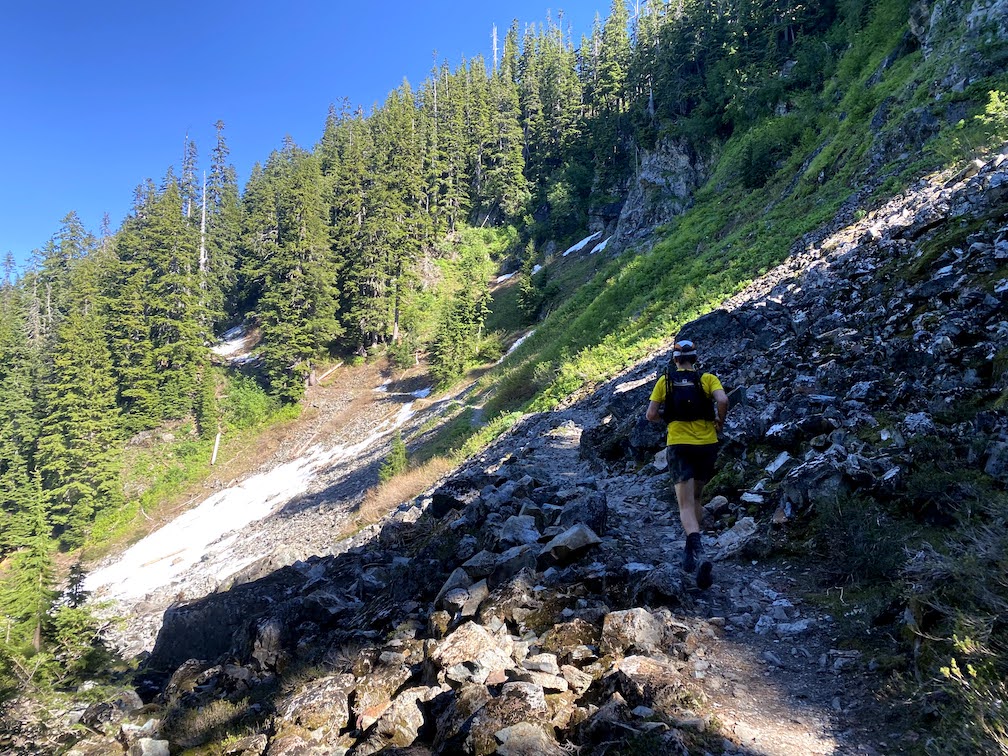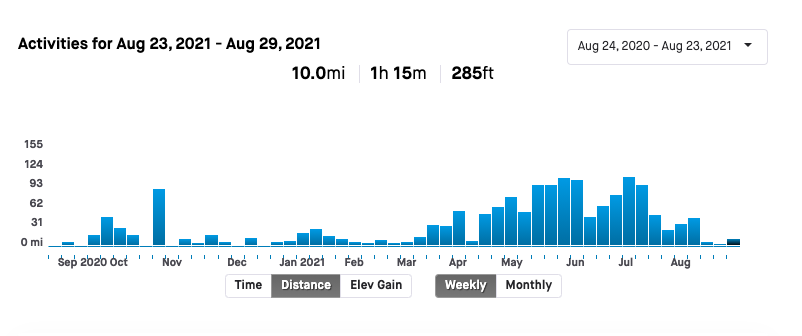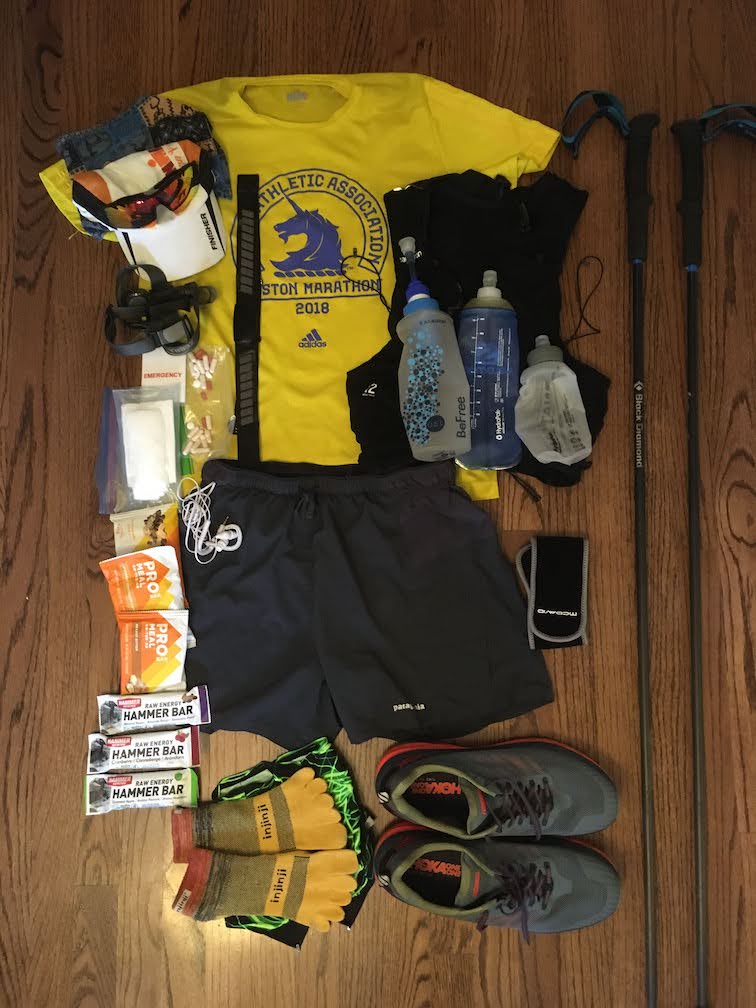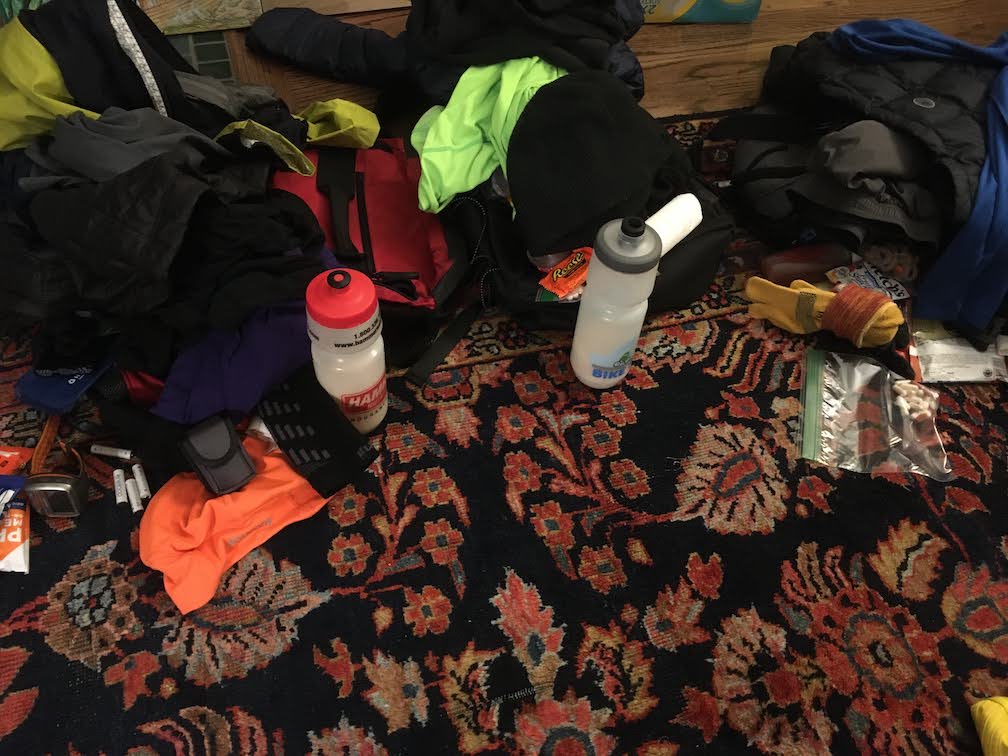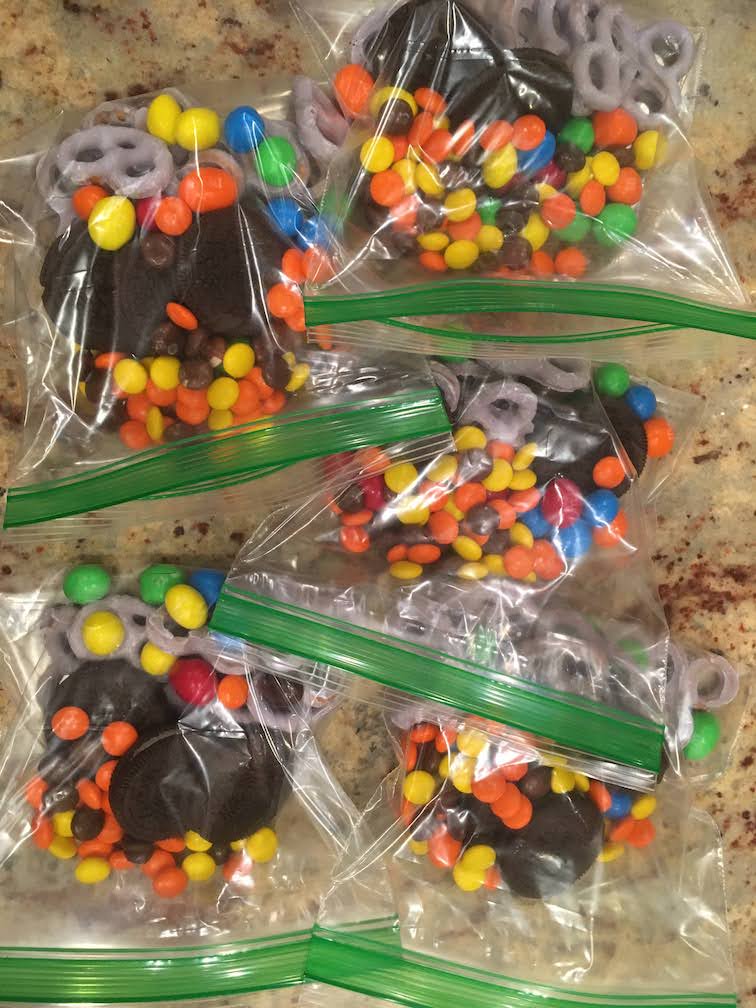Thoughts Before My 100 Mile Debut
This wasn’t the plan. The plan was probably not enough anyways, but now we’re certainly in not enough territory. I’m not really sure how this will go.
After a month of lower-than-expected training (injury and illness), I’m just feeling good enough to run again and I’m going to attempt to run the Cascade Crest 100 this weekend. This is one of the harder 100 mile races in the country on account of the vert, amount of single track trail and sheer ruggedness of it. One section of the course is so steep that there is a rope you have to use to navigate up and then back down it. Over the course of 100 miles, run mostly on the Pacific Crest Trail, we’ll cross streams, climb 23k ft and descend about the same.
Technically this year the race is 102 miles. They had to adjust the course due to fire danger and it turns out they don’t care about being precise for these long trail races anyways. You can’t really compare between courses anyways due to huge differences in vert, elevation, footing, etc.
All of the unforeseen circumstances aside, I did get some solid training in. Although I doubt I can get my goal of sub-24, I think I can finish within the 34 hour cutoff.
My plan was to prepare for this race with three runs a week, and a lot of treadmill desk walking. You can see some nice training blocks where between them, I was getting 100+ mile weeks in. There were always supposed to be some rest weeks in there but that big drop as I approached August was unintentional. I wanted there to be another solid 3 week training cycle, the biggest cycle, complete with a few big trail runs. Unfortunately, in July I rolled my ankle while running at night on a trail and immediately had to lay off the treadmill. I was able to run on the road some, but not trails. I was slowly working my way back to strength when my whole family got COVID and I missed another two and a half weeks of running between being caretaker and then catching it myself (breakthrough Delta variant case – no fun).
As it stands, I barely ran 100 miles in all of July and August combined. You have to add in June too if you want to find 23k ft of vertical climbing. To find 100 trail miles in my training you have to add in May as well. This weekend I’ll attempt to do all of that in a single run.
What we get to find out in this race is a) does my ankle hold up and b) have I held onto enough of the fitness from pre-July and c) was that enough fitness anyhow?
Why run at all?
This whole thing was my bucket list challenge for this year, so I’m going to attempt it. Technically I still have 4 months to complete the challenge as I’d given myself the flexibility to do something equivalent if I wasn’t able to get into the official race, but I’m here and able to try, so I might as well.
On top of that, I’ve already paid the $450 to signup, so I might as well go for a nice trail run where they provide food for me. If I do have to drop out at some point, it will still be a great training run and good practice.
If I’m able to finish, even if really slow, it will make it easier to apply to other 100 mile trail races next year. Races usually require that you’ve finished a 50 or 100 mile race in the last few years. I haven’t run a race since 2018, but was able to convince this one to let me in based off of my antics on the Wonderland Trail.
Finally, I’m not a quitter. It takes a lot to get me to change my mind once I’ve set it.
Strategy
Strategy wise I’m planning to go with the Pokemon approach – ‘gotta catch them all’. I start in the latest of the three start waves and intend to be in very last place on the trail for the first few miles. I’ll eventually start catching people and plan to spend the rest of the race making up ground. I run best from behind and get a big mental boost from catching and passing people.
Gear
Gear wise, I’m excited about running light. My other big trail runs have all been self-supported, meaning I had to carry everything I needed, including fuel and emergency gear. I would usually have 10-12lbs on my body. This race, while rugged, has aid stations at least every 8 miles. That means I can run with a lot less gear and know that I have a place to refill my water bottle and get some food in the near future. I’ll likely have closer to 4-5lbs on me at any time, most of that being water weight.
In addition to aid stations, we also get to stash drop bags in 5 different places, meaning I can change socks, shoes, layers, etc. as well as grabbing more food. Some people have pacers and crews, but I’m not all about that. I’m hoping my wife and kids will be able to come help me cross the finish line, but that depends a bit on when I finish – with all of the unknowns going into this race my expected range is between 7am and 7pm on Sunday.
Packing the drop bags is a bit tricky due to the range of possibilities in times and temperatures. I might come across the final drop bag in the middle of the night when the temperature is in the low 50s, which will feel much colder after running for 12+ hours and with the wind on the peaks. Or I might come across that bag at 9am as the temperature climbs to 75* and I’m desperately trying to cool down. What I essentially did is pack 4 bags that all have the same thing, some layers, some first aid supplies and some extra gear in and some food. As I get to each drop bag I’ll decide if I need anything – I expect I’ll grab food at each one and at least a long sleeve shirt as it turns to night. I also plan to change shoes twice. Running shoe foam can only handle so much compression before it starts passing more of the impact to your legs, so by changing shoes I should help preserve my legs a bit.
Fuel
Gels and bars with some supplemented junk food (a.k.a. calorie rich foods) are my go to fuel for big runs. For this event I’m going to treat it a bit more like a race and also use liquid nutrition like I did for my Ironman in 2014. The aid stations will have some real food, and I plan to eat plenty of that, but while I’m running I’d like to mostly be able to sip my calories so my eyes can focus on the trail.
I still packed some good crunchy junk food though. 🙂
Goals
Results
- Don’t die
- Enjoy being outside
- Finish the course (even if after the allowed time)
- Officially finish (under the official 34 hour cutoff)
- Finish in under 30 hours
- Top 50% of finishers
- Finish in under 27 hours
- Top 25% of finishers
- Finish in under 24 hours (my bucket list item for this year)
Tactics
- Be in last place at the start
- Don’t exceed 140bpm in the first 26 miles
- No mile in the first 50 faster than 8 minute pace
- 5 minutes or less at aid stations and stops – don’t stop moving
- No single mile (and mid-mile stopping) is >30 minutes
- 400 calories an hour for the first 50 miles
- Negative split – last 51 miles faster than the first 51
- Sub-10 minute miles on the flats around Hyak
- 300 calories an hour after Hyak
- Average 130bpm+ overall
- Sub-10s for the final flat 4 miles
